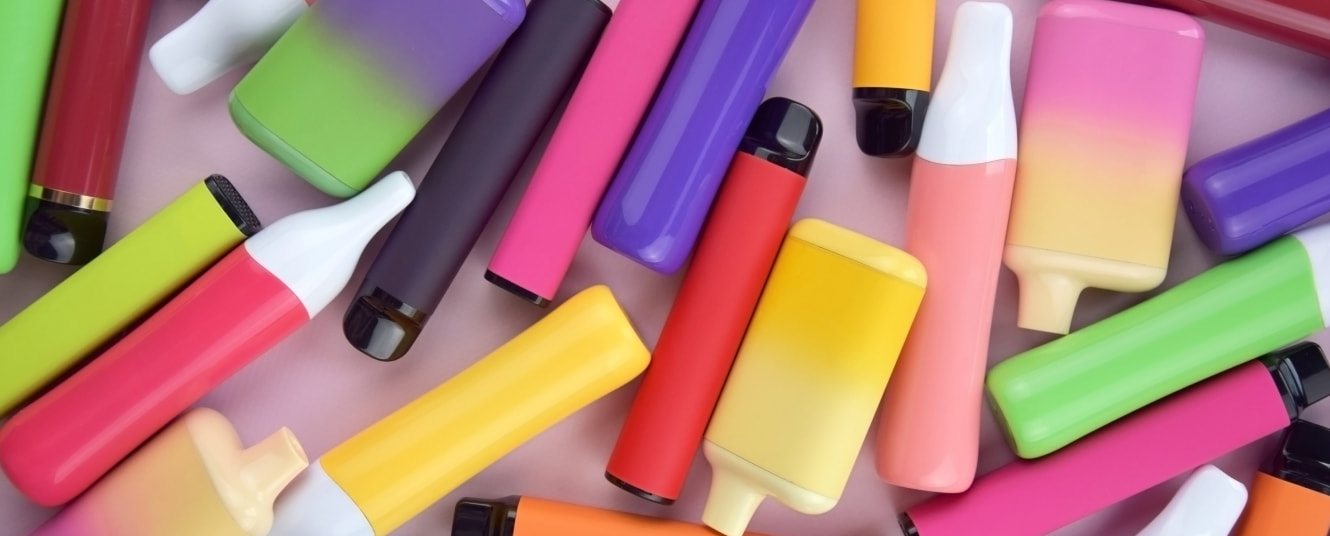With the UK-wide ban on the sale and supply of single-use disposable vapes having come into force in June 2025, many industry experts and interested observers are keen to know how well it is working.
In this article, we aim to move beyond rhetoric and provide a factual, data-driven analysis of the ban's initial impact against its three primary goals: reducing youth access, mitigating environmental damage, and avoiding an increase in smoking rates.
It is, of course, still early days but we are currently seeing some mixed results: most notably a clear shift in consumer behaviour but also a rise in the illicit vape market. We will explore the information currently available while also bearing in mind that these are only the initial results and that research is ongoing.
Exploring the three core objectives of the ban
The disposable vape ban was introduced by the Government as a way to tackle various issues. The stated goals for the policy included limiting youth vaping, reducing environmental impact and protecting adult smokers.
Limiting youth vaping
The low cost, ease of use, and child-appealing branding and flavours offered by disposable vapes meant that they were determined to be a driver of youth vaping.
Metric of the ban’s success: A decline in youth usage rates, particularly among non-smokers.
Reducing environmental impact
The widespread use of disposable vapes resulted in the disposal of millions of lithium-ion batteries and unrecyclable plastic/liquid waste. This is due to the fact that they were designed to be used and then thrown away once the e-liquid they contained was finished, unlike reusable vapes.
Metric of the ban’s success: A reduction in disposable vape litter and general e-waste.
Protecting adult smokers
It was also important that the policy avoided deterring adult smokers from switching to less harmful alternatives, such as vapes.
Metric of the ban’s success: Stable or continued decline in adult smoking rates; successful transition of former disposable users to reusable vape devices.
You can find out more about the aims and objectives of the legislation in our guide to the disposable vape ban.
Initial evidence of success: the market’s shift to reuseable vapes
In the months since the disposable vape ban, we have seen a rapid shift in the types of vape systems chosen by consumers.
Consumer migration to refillable and reusable vape systems
There has been a significant shift in the buying habits of vapers, with the move from disposables towards rechargeable, reusable pod kits.
There is evidence that a large majority of former disposable users are switching to refillable products. For example, one study found that 85%-89% of vapers are transitioning to reusable devices, rather than returning to cigarettes. Although this survey was funded by Elf Bar and was primarily of their customers, it does support the refutation of the “mass relapse” narrative that had suggested consumers may return to cigarettes rather than alternative vaping options.
ASH also updated its fact sheet on the use of vapes among adults in Great Britain, indicating that the use of disposables began to decline following the announcement of the ban. It reports that disposable vape use peaked in 2023 and has fallen since, with many users switching to pod devices.
Refillable kits, nic salts and reusable prefilled pod kits are now dominating sales and shelf space, as we have seen in our own stores.
Reduction in visible litter
There have been some local reports of a “massive reduction” in the number of disposable vapes found, with Aberdeen-based litter pickers reporting that they are now a rare occurrence – which is a big change compared to pre-ban. However, a litter picker from Midlothian said although the numbers had dropped, they were still finding vape waste. The picker interviewed speculated that consumers might be buying disposables illicitly. While extensive research has not yet been released, this coverage does suggest an optimistic outlook.
It is also worth considering the fact that the Scottish Government released a report in August 2025 that suggested that the disposables ban would lead to reductions in greenhouse gas emissions from incineration and waste fires, thanks to the fact single-use vapes usage would drop.
Prior to the ban, The Guardian also reported that more than a million vapes were thrown away per day, so even a modest percentage reduction brought about by the legislation is likely to have a significant impact.
The unintended consequences: a growing illicit market
While it is clear that some positive changes have occurred following the ban, there has also been an unintended consequence, with evidence to suggest that the illicit sale of single-use vapes is posing a substantial problem.
The surge in illegal vape seizures
Various councils across the UK have reported that their enforcement teams have encountered a significant number of shops still selling banned vapes, despite a decent compliance rate overall. For example, Luton reported that it had confiscated 539 non-compliant vapes within only two weeks of the ban while Slough Trading Standards had seized and destroyed 2,550 single-use vapes by July 2025. This demonstrates a significant rise in confiscations, particularly in areas where very few had been reported prior to the ban.
The BBC reported on the sharp rise in seizures in recent years, such as Sussex confiscating around 21,200 illicit vape products in 2024 in comparison to none in 2020. A growing number of premises selling banned or illicit vapes is likely to drive consumers toward unregulated products with unknown ingredients, illegal tank sizes, and non-compliant nicotine levels – all of which pose a greater public health risk.
The relapse and uptake risk
The survey of 6,000 vapers released by Elf Bar also showed a worrying trend – it found that 26% of single-use vapers have turned to illegal vapes, started smoking more or returned to tobacco following the ban. While this is a relatively small survey and one carried out by a member of the industry, it does highlight a notable number of former disposable users left to choose less desirable options.
The ultimate risk is that the ban is inadvertently sending a mixed message to adult smokers: if an alternative product is banned, it may be wrongly perceived as being equally or more harmful than smoking, deterring them from making the switch to legal, regulated alternatives. The same survey quoted above also found that 51% of the adult respondents incorrectly believed that vaping is as, or more, harmful than smoking.
Conclusion: is the disposable vape ban working?
It is clear that the disposable vape ban has had a huge impact on the industry and also consumers. For a start it has successfully driven the legal market toward more sustainable, compliant, reuseable products, has resulted in a huge number of consumers switching to reusable vapes and has reduced visible litter. In this sense, it is working.
However, the immediate rise of the illicit, non-compliant market poses a new and dangerous public health and enforcement challenge. The short-term overall success of the ban will be most successfully measured by the efficacy of Trading Standards enforcement in the coming 6-12 months. For the longer-term success, we will rely on the release of more research and evidence.
The facts and figures we have now offer a glimpse into the potential effects of the ban, but ongoing research will give us a more detailed view of how successful it has been in respect of its aims. In the meantime, it remains the case that for adult smokers, the path to a less harmful alternative remains through legal, regulated, refillable and/or reusable vape systems.
Sources
Conveniencestore.co.uk – 07/08/2025
ASH.org.uk – 01/07/2025
Pressandjournal.co.uk – 03/07/2025
Midlothianview.com – 08/08/2025
Gov.scot – 01/08/2025
Guardian.com – 16/12/2025
Luton.gov.uk – 10/06/2025
Slough.go.uk – 09/07/2025
BBC.co.uk – 18/08/2025
Ukvia.co.uk – 12/08/2025

























